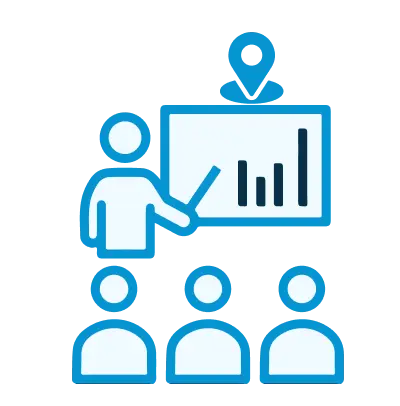We're open through the holidays to support your upskilling goals — book your session today!
We're open through the holidays to support your upskilling goals — book your session today!
Unable to find what you're searching for?
We're here to help you find itChange Technology



Network Monitoring and Analysis is a crucial technology for businesses and organizations to ensure the performance and security of their networks. It involves tracking network traffic, identifying issues, and diagnosing problems that might affect the system’s efficiency. By leveraging tools like Wireshark, SolarWinds, and Nagios, network professionals can identify potential disruptions, monitor network bandwidth usage, and detect security threats. With cyber-attacks and data breaches on the rise, it's more important than ever to have real-time monitoring in place. Learning network monitoring provides the skills to analyze data flow, manage network traffic, and ensure smooth operations for both small and large organizations. Major corporations such as Cisco, IBM, and HP rely on network monitoring to optimize their IT infrastructure. If you aim to work in network administration, security, or IT infrastructure management, gaining expertise in network analysis will give you a competitive edge in today’s digital-first world.

Clear All
Filter
Clear All
Clear All
Clear All
*Excluding VAT and GST
Showing to of entries
Network Monitoring and Analysis has evolved significantly since its inception in the early 1980s. Originally, network monitoring was a manual and error-prone task. However, with the rise of the internet and complex enterprise networks, the demand for automated tools and solutions grew. In the 1990s, software like Ping and Traceroute became popular for basic monitoring. Over time, more sophisticated tools like Wireshark emerged, enabling real-time traffic analysis and packet capture. The technology continued to advance with the development of SNMP (Simple Network Management Protocol) and other protocols that enhanced network performance monitoring. Today, with the integration of AI and machine learning, network monitoring has become even more intelligent, enabling predictive analysis and automated troubleshooting.
Recent advancements in network monitoring and analysis are transforming the way organizations manage and optimize their networks. The integration of AI and machine learning has enabled smarter monitoring systems that can predict potential issues before they occur, reducing downtime and enhancing system performance. Another growing trend is the adoption of cloud-based monitoring tools, which provide scalable solutions that can be accessed remotely. SD-WAN (Software-Defined Wide Area Network) technology is also gaining momentum, offering improved network flexibility and better cost efficiency. Furthermore, the rise of IoT devices has made network visibility more complex, leading to innovations in monitoring tools capable of handling high volumes of traffic and diverse data sources. As businesses continue to move towards digital transformation, the need for comprehensive network monitoring tools will only increase.
Ans - No, the published fee includes all applicable taxes.



